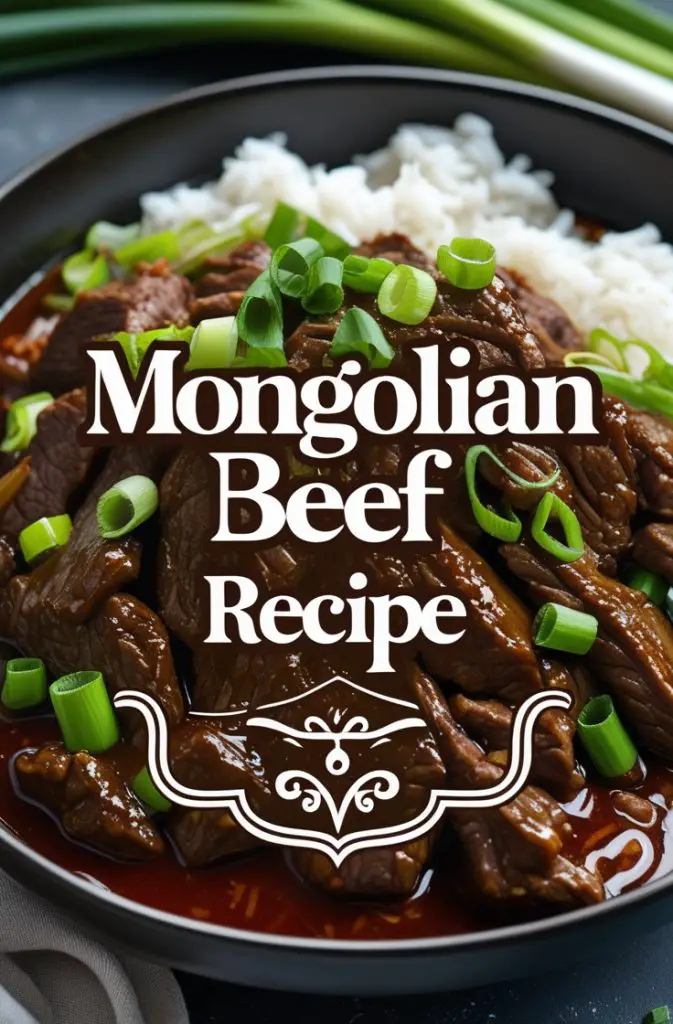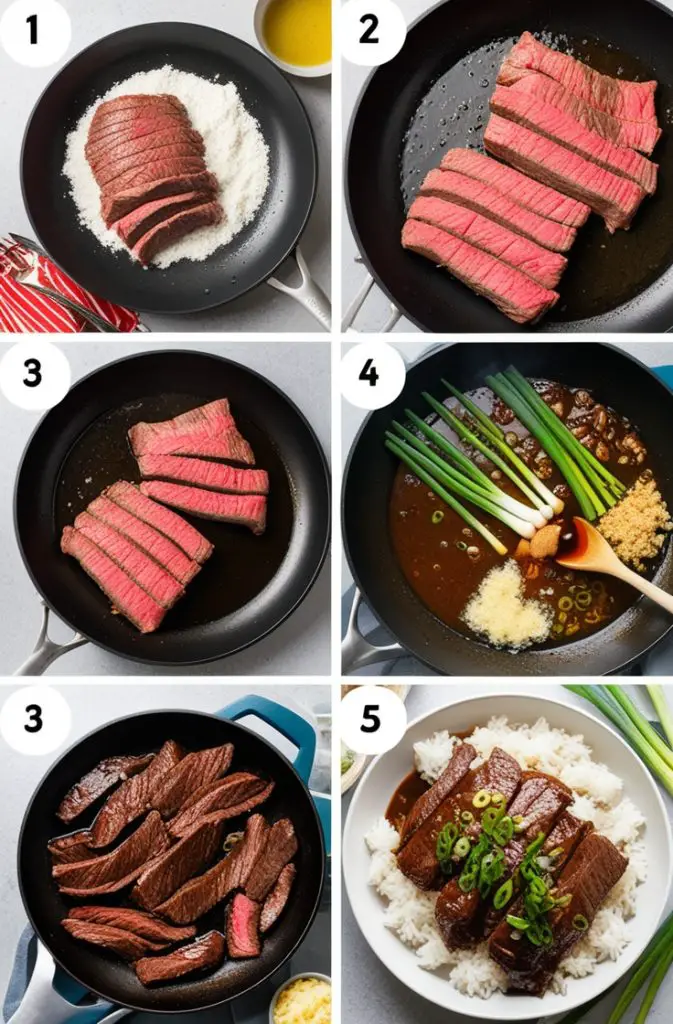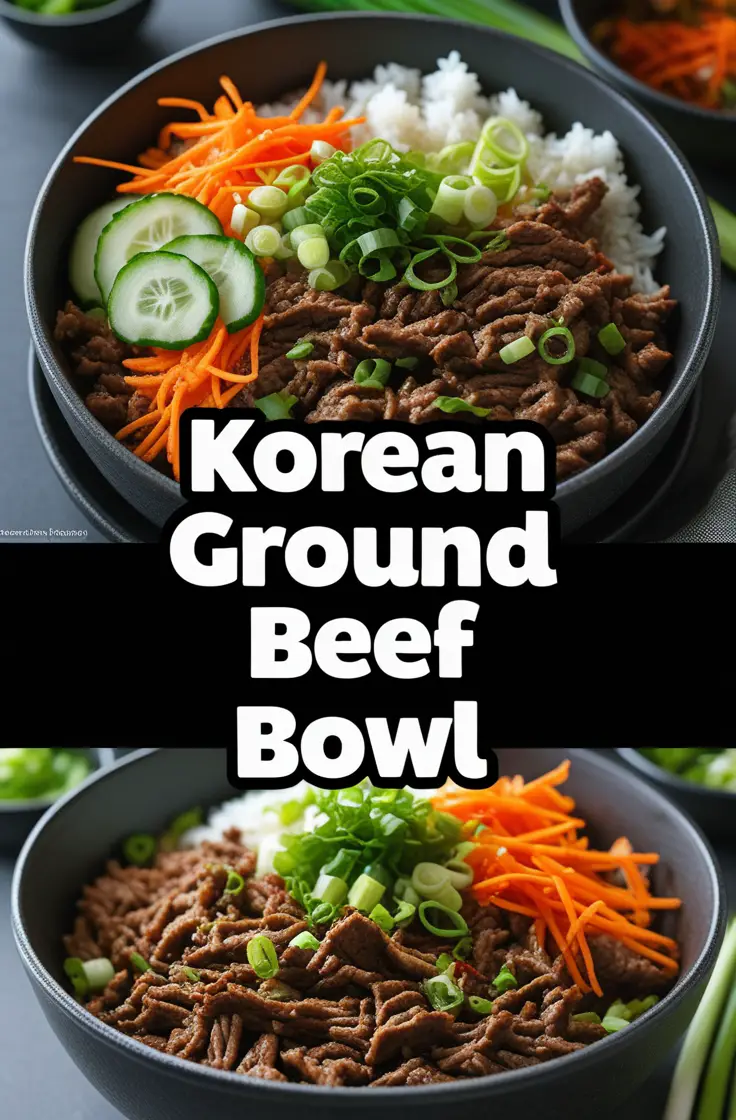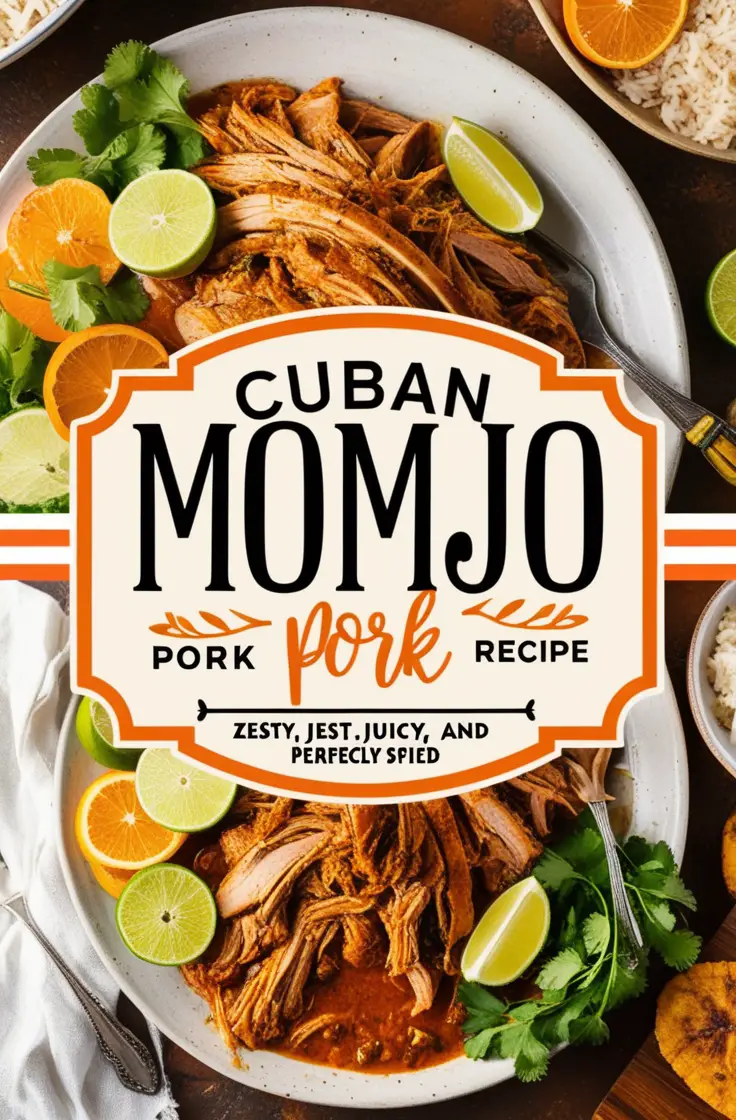If there’s one dish that always impresses at the dinner table, it’s Mongolian Beef. This quick and flavorful stir-fry combines tender beef with a glossy, slightly sweet, and savory sauce that clings to every bite. It’s a restaurant favorite that’s surprisingly easy to recreate at home, and I’m here to guide you through it step-by-step.
This recipe is perfect for a weeknight dinner, especially when paired with steamed rice and some fresh vegetables. Let’s dive into the details so you can bring this classic dish to life in your kitchen!

Why You’ll Love This Mongolian Beef Recipe
- Quick and easy: This dish comes together in under 30 minutes, making it ideal for busy nights.
- Packed with flavor: The combination of soy sauce, garlic, and ginger creates a sauce that’s irresistibly good.
- Perfect texture: The beef is tender, juicy, and lightly caramelized for that authentic restaurant-style touch.
- Customizable: You can add your favorite vegetables or adjust the sweetness and spice levels to suit your taste.
It’s a recipe I turn to when I want something delicious without spending hours in the kitchen.
Ingredients for Mongolian Beef
Here’s what you’ll need for this classic dish:
- 1 lb flank steak (sliced thinly against the grain)
- 1/4 cup cornstarch
- 3 tablespoons vegetable oil
- 3 garlic cloves (minced)
- 1 teaspoon fresh ginger (grated)
- 1/2 cup low-sodium soy sauce
- 1/4 cup brown sugar
- 1/4 cup water
- 1 teaspoon sesame oil (optional, for extra depth)
- 2 green onions (sliced into 2-inch pieces)
- 1/4 teaspoon red pepper flakes (optional, for a hint of spice)
- Steamed rice (for serving)
Flank steak works best for its tender texture, but you can also use sirloin or skirt steak if preferred.
How To Make Mongolian Beef

Let me show you how to make this restaurant-worthy dish with ease.
Step 1: Prep the beef.
Slice the flank steak thinly against the grain to ensure it’s tender. Toss the slices in cornstarch, making sure each piece is evenly coated. This helps create a light, crispy coating when cooked and thickens the sauce.
Step 2: Sear the beef.
Heat 2 tablespoons of vegetable oil in a large skillet or wok over medium-high heat. Once the oil is hot, cook the beef in batches, searing for about 1-2 minutes per side until browned. Remove the beef and set it aside on a plate.
Step 3: Make the sauce.
In the same skillet, add the remaining 1 tablespoon of oil. Sauté the garlic and ginger for about 30 seconds until fragrant. Stir in the soy sauce, brown sugar, and water. Let the mixture simmer for 2-3 minutes until slightly thickened.
Step 4: Combine everything.
Return the seared beef to the skillet, tossing it in the sauce until coated. Add the green onions and cook for another minute. If you like a touch of heat, sprinkle in some red pepper flakes.
Step 5: Serve.
Transfer the Mongolian Beef to a serving dish and garnish with additional green onions if desired. Serve hot over steamed rice for the perfect pairing.
Pro Tips for Perfect Mongolian Beef
- Slice the beef thinly: Thin slices cook quickly and stay tender. Partially freezing the steak for 15 minutes makes it easier to slice.
- Don’t overcrowd the skillet: Cook the beef in batches to ensure even browning and avoid steaming.
- Adjust sweetness: If you prefer a less sweet sauce, reduce the brown sugar slightly. For extra sweetness, add a drizzle of honey.
- Add vegetables: Toss in broccoli, snap peas, or bell peppers for added color and nutrition.
- Use low-sodium soy sauce: Regular soy sauce can make the dish too salty. Low-sodium ensures a balanced flavor.
How To Serve Mongolian Beef
This dish is versatile and pairs well with a variety of sides. Some ideas include:
- Steamed rice: Classic and perfect for soaking up the sauce.
- Fried rice: For an extra-special meal, serve with vegetable or egg fried rice.
- Stir-fried vegetables: Broccoli, bok choy, or green beans complement the beef beautifully.
- Noodles: Toss the beef and sauce with cooked noodles for a Mongolian beef stir-fry twist.
Nutritional Information (Per Serving)
Here’s an estimate for one serving (based on 4 servings):
- Calories: ~400
- Protein: ~25g
- Carbs: ~30g
- Fat: ~15g
To make it lighter, reduce the sugar or use a leaner cut of beef.
Storage and Reheating Tips
- Storage: Leftovers can be stored in an airtight container in the fridge for up to 3 days.
- Reheating: Warm gently on the stovetop over low heat or in the microwave in short intervals, adding a splash of water if needed to loosen the sauce.
- Freezing: You can freeze Mongolian Beef for up to 2 months. Thaw in the fridge overnight before reheating.
Conclusion
Mongolian Beef is one of those dishes that feels like a treat but is surprisingly easy to make at home. The rich, savory sauce, tender beef, and hint of sweetness make it an instant favorite every time I serve it.
I hope you enjoy making this recipe as much as I do! If you try it, let me know how it turns out or if you added any fun twists. Happy cooking!
FAQs
Q1: What is the best cut of meat for Mongolian beef?
A: The best cut of meat for Mongolian beef is flank steak or sirloin. These cuts are lean, flavorful, and become tender when sliced thinly against the grain and cooked quickly.
Q2: Why is Mongolian beef so tender?
A: Mongolian beef is tender because the meat is typically marinated with ingredients like soy sauce, cornstarch, and sometimes baking soda. The cornstarch creates a velvety texture, while the quick stir-frying method prevents overcooking.
Q3: What makes it Mongolian beef?
A: Mongolian beef is characterized by its sweet and savory sauce made from soy sauce, brown sugar, and garlic, often combined with ginger and green onions. Despite the name, it is more of an American-Chinese dish than a traditional Mongolian recipe.
Q4: What is the difference between Szechuan beef and Mongolian beef?
A: Szechuan beef is spicier and often features bold, numbing flavors from Szechuan peppercorns and chili peppers, whereas Mongolian beef is sweeter and milder, with a focus on soy-based sauce and caramelized flavors.
Q5: Why is Chinese takeout beef so tender?
A: Chinese takeout beef is tender due to a technique called velveting, which involves marinating the beef in a mixture of cornstarch, water, soy sauce, and sometimes baking soda or egg white. This creates a silky texture and protects the meat during cooking.
Q6: What is the difference between General Tso and Mongolian beef?
A: General Tso’s beef (or chicken) is fried and coated in a tangy, sweet, and slightly spicy sauce, often featuring vinegar and chili. Mongolian beef, on the other hand, is stir-fried and served in a sweeter soy-based sauce with green onions.

Hi, I’m Emma Collins, a 24-year-old mom of two daughters and a little boy who keeps life full of energy. Cooking is my passion and my way of bringing my family together. Whether I’m experimenting with new recipes or perfecting old favorites, I love making meals that are simple, delicious, and full of love. As a busy mom, I’ve learned how to keep things quick and easy without sacrificing flavor. I’m excited to share my recipes and tips with you, hoping they inspire you to create memorable moments in your own kitchen with your loved ones.





